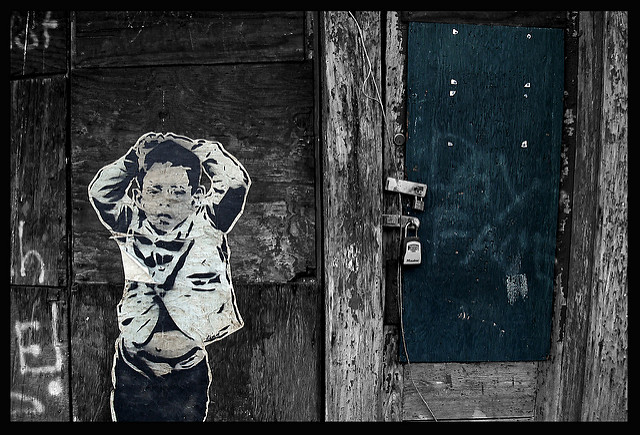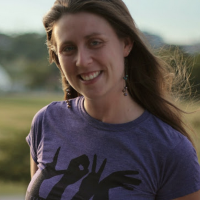I didn’t fully realize it till now, but I think I’m scared.
I’m scared for my beloved Baltimore, this charming city of brine and crime. I’ve hopscotched around the planet, and still my beleaguered hometown is my favorite city in the world. But as much as I yearn for it to thrive, and for its people to feel valued, and safe, I worry.
I fear that our mounting mistakes and our palpable discord will eventually become irreparable.
Despite its small size, Baltimore is a city divided: there are parts where the more affluent get to go, and parts where the impoverished have to stay. While these partitions are not based solely on race, thanks to Baltimore’s groundbreaking history of redlining, skin color often determines who “belongs” where. And once we receive our assignments, few of us stray from them—white people because we choose not to, black people because of how they are treated when they do.
People in the upscale areas, like the waterfront and recently developed districts, typically don’t directly feel the searing rates of poverty and crime that much of Baltimore withstands. Aside from head shakes of pity, or disapproval, we are insulated from these issues. Meanwhile, people in the crumbling communities, food deserts lined with abandoned homes, resent the resources allocated elsewhere—places occupied, mainly, by people who do not look like them. In a city that isn’t even 100 square miles, this disparity has created a chasm so significant that the residents of these two Baltimores not only don’t communicate, we largely cannot even imagine positive interactions with people from the “other” Baltimore.
But my experience of Baltimore is fortunately more collective, even with my privilege protecting me from its worst parts: I am a white woman who teaches in our public schools. My whiteness grants me access to Baltimore’s wealthier areas, while my career introduces me to people and places I likely would not have known otherwise.
The high schoolers I teach are so special to me I don’t call them my students—I call them my lovelies. Kind, creative, and clever, my lovelies make my days matter. Through neglected neighborhoods, they travel on pot-holed streets and pass dangerous corners, all to arrive at a battered building. Every day, I’m there waiting, so eager to see my lovelies that I am generally unfazed by our surroundings, and am in fact happy to be there.
At least, during the school day.
I choose to teach in deteriorating neighborhoods (which itself smacks of my privilege: generational poverty and systemic racism have anchored my lovelies there, whereas I come and go as I please), and then get to enjoy the thriving parts of my city, where my welcome is always unspoken, and understood. But when my lovelies dare to go to, or even pass through, these neighborhoods, it’s like Jim Crow has been resurrected.
As if my lovelies and others in their communities do not have enough strife: they are the ones whose choices and voices are limited by some combination of trauma, oppression and poverty. The ones who understand what Nina Simone meant when she sang, “Oh, Baltimore, ain’t it hard just to live?” And also the ones who cannot even shop, or eat, or walk, in certain parts of their own city without being badgered.
As a city, we are so saturated in separation that proposing, let alone working toward, unity seems preposterous. But how is limping along as we have been sustainable?
So last year, during the Baltimore Uprising, when Baltimore labored through a night of upheaval, and the agenda of the agitated fleetingly ruled the city, I was, in a way, relieved. Though not enough to be considered justice, I thought it was healthy for the rest of Baltimore to glimpse even bits of the apprehension, the frustration, the uncertainty, that much of Baltimore breathes daily.
Though fleeting—we’ve been spared the history of persecution that black Americans bear, and our white privilege was still intact the next morning—it was also powerful, and hopefully induced even a trace of empathy in those who didn’t have any before. On April 27, 2015, Baltimore broke, and it burned: hours after Freddie Gray’s funeral, but generations, and centuries after disparity first divided us. It was overdue for those of us perched in our privilege to experience instability.
I haven’t widely admitted this, but the fear that affluent Baltimore felt that night actually, albeit briefly, subsided mine.
We returned rather quickly to status quo, though, and one year later, the Uprising’s imprint feels minimal. We’ve seen increased activism, and community engagement, but still, every day, my commute to and from school spans two Baltimores.
Wednesday night, one year after Baltimore rose up, I joined other concerned, but hopeful Baltimore citizens at the epicenter of the Uprising. Though I felt no fear for my safety, I did for my city. I know a year isn’t long, but was our progress enough? Will it be enough this year? Or the next?
What will it take for us to unify these two Baltimores?
Rousing words from a man who had endured police brutality gave me, at least momentarily, my answer.
“Hug a mothafu*ka you don’t know!” he shouted. “Right now! Hug someone you don’t know!”
I smiled.
And, without fear, walked into the open arms of strangers.
Author: Kerry Graham
Editor: Sara Kärpänen
Photo: John Brucato / Flickr












Read 0 comments and reply